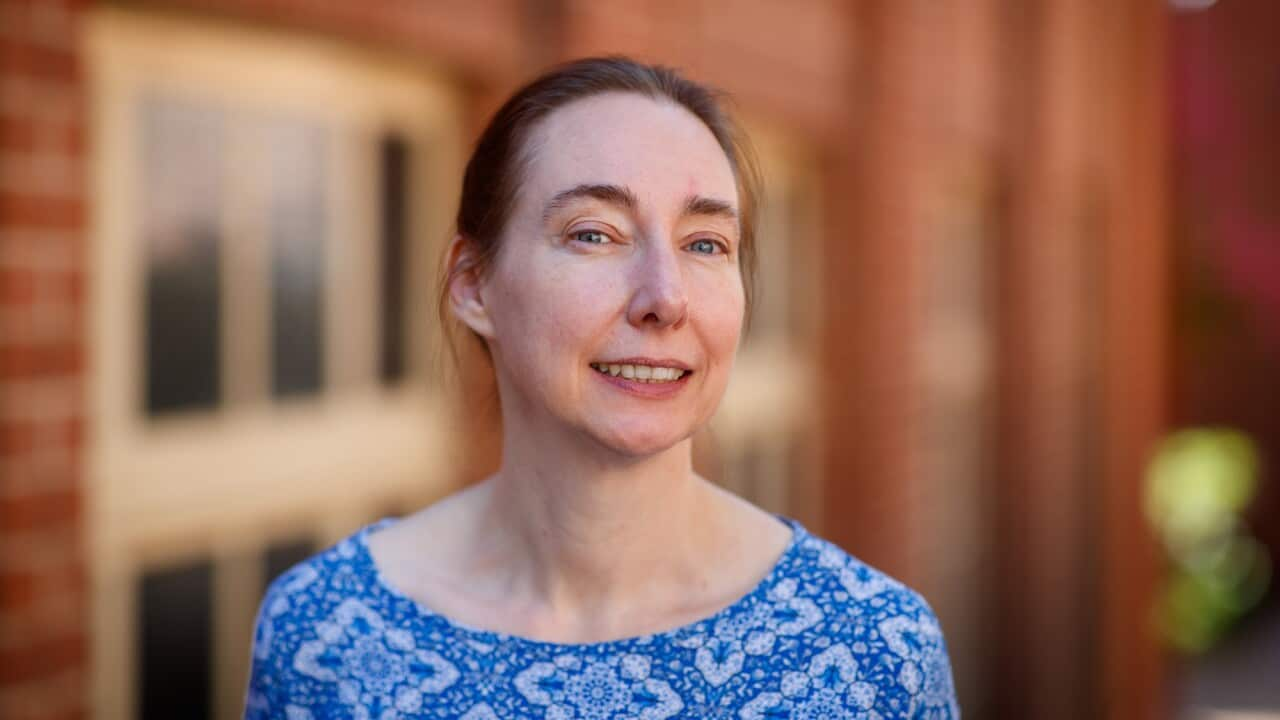Key Points
- The International Day of Women and Girls in Science is being observed on 11 February.
- The new president of the Australian Institute of Physics says females remain under-represented in physics.
- The government is undertaking a review on how to improve the pathways for females to work in the sciences.
Dark matter researcher and new Australian Institute of Physics president Nicole Bell spends her days discovering the secrets of the universe.
From a youngster with a knack for maths, she ended up in the field after years of scientific exploration, progressing from work with particle physics - "the building blocks of nature" - to particle astrophysics.
But the mathematics of female participation in the field do not add up because women are under represented - an unfortunate equation Professor Bell wants to solve.
She was appointed president of the Australian Institute of Physics ahead of Saturday, the International Day of Women and Girls in Science.
It was an exciting time for the field with Australia ramping up its research efforts but in physics generally, women were still under-represented, said Prof Bell, from the University of Melbourne and helm of the ARC Centre of Excellence for Dark Matter Particle Physics' theory program.
"It is important that we have women in places where the generation that follows can see them and see where they can be in 20 years' time," she said.
"There are so few women in physics. This is a long-term problem - it's not going to be solved overnight."
The issue started in schools with, for instance, girls dropping out of maths and closing the door to a range of science, technology, engineering and mathematics (STEM) disciplines but particularly physics, Prof Bell said.
By the time students reached university, physics classes could be about 20 per cent women and then at a career level, science was not accommodating for career breaks to start families, she said.
Then, there were implicit biases favouring men.
Society as a whole, including parents, needed to shift to encourage girls towards STEM, she said.
While children might think of a science career as dry and mathematical, it was highly creative, collaborative and required imagination and great communication skills, Prof Bell said.
"It's not the picture of a scientist that you have when you're at school and it turns out to play to a whole bunch of strengths that actually women have," she said.
LISTEN TO

Calls for more women and diversity in STEM
SBS News
10/08/202207:54
Girl Geek Academy, which provides programs across a range of STEM disciplines, is calling for more female-focused federal government funding ahead of the completion of the Pathway to Diversity in STEM Review.
"With Women in STEM programs under review for most of this year, we currently don't anticipate any new funding commitments until 2024," co-founder Sarah Moran said.
"The government's third year in office is far too late to wait. We need action now."
Prof Bell's work involves understanding dark matter, which is a mysterious substance that pervades the universe and was noticed by the gravitational force it exerts on stars and galaxies.
"The universe ... you might think, is something completely different (to particle physics) because that's of the largest scales you imagine - (but) actually, the physics of the two is intimately connected," she said.
"Particle astrophysics connects the two ... so I spent most of my career sitting on that interface between particle physics, astrophysics and cosmology.
"That's where dark matter lives, so it was inevitable that I was going to end up working on dark matter."
Prof Bell said she also wanted to shine a light on the lack of females working in the field.











